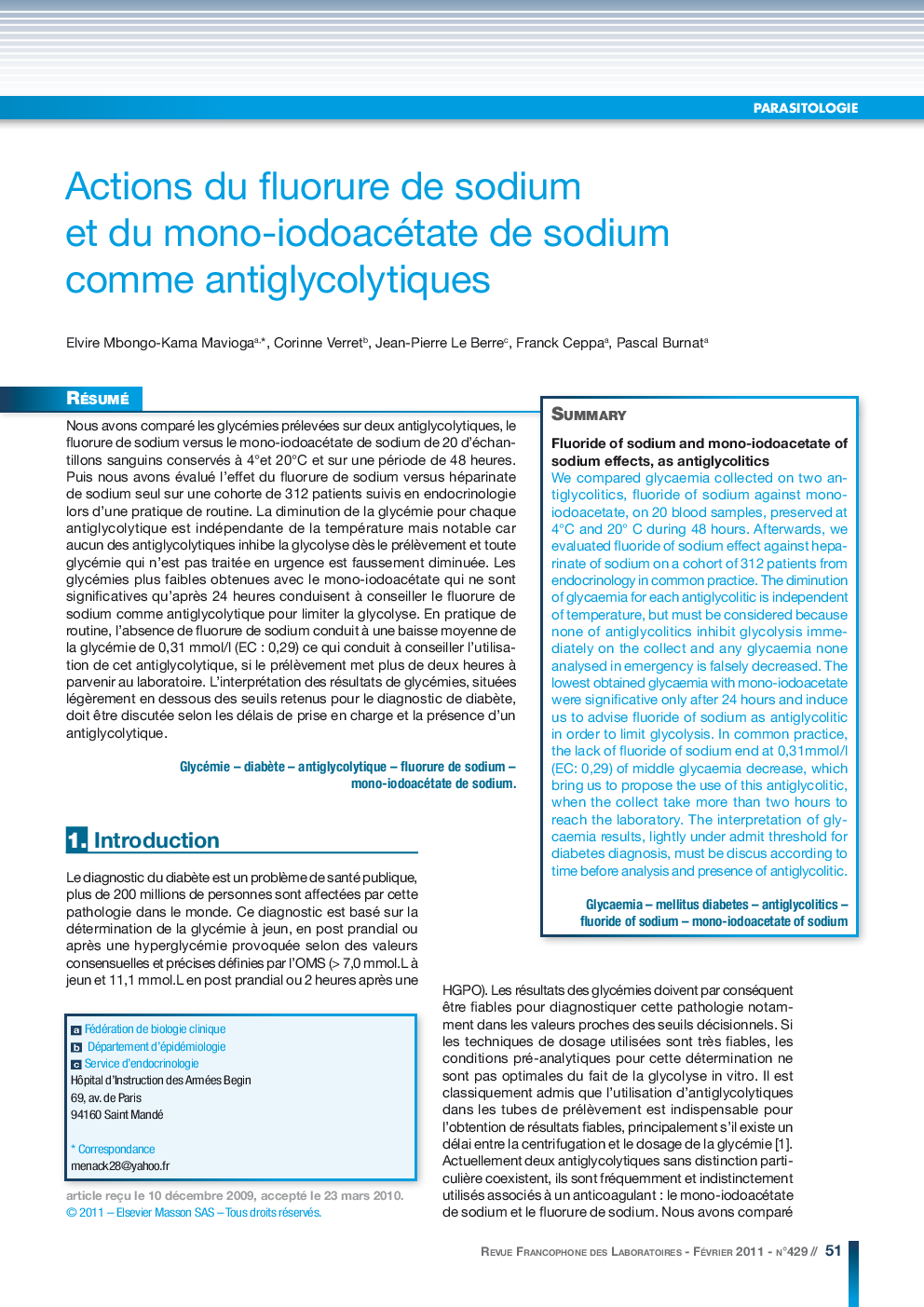| Article ID | Journal | Published Year | Pages | File Type |
|---|---|---|---|---|
| 7657129 | Revue Francophone des Laboratoires | 2011 | 4 Pages |
Abstract
We compared glycaemia collected on two antiglycolitics, fluoride of sodium against mono-iodoacetate, on 20 blood samples, preserved at 4°C and 20°C during 48 hours. Afterwards, we evaluated fluoride of sodium effect against heparinate of sodium on a cohort of 312 patients from endocrinology in common practice. The diminution of glycaemia for each antiglycolitic is independent of temperature, but must be considered because none of antiglycolitics inhibit glycolysis immediately on the collect and any glycaemia none analysed in emergency is falsely decreased. The lowest obtained glycaemia with mono-iodoacetate were significative only after 24 hours and induce us to advise fluoride of sodium as antiglycolitic in order to limit glycolysis. In common practice, the lack of fluoride of sodium end at 0,31mmol/l (EC: 0,29) of middle glycaemia decrease, which bring us to propose the use of this antiglycolitic, when the collect take more than two hours to reach the laboratory. The interpretation of glycaemia results, lightly under admit threshold for diabetes diagnosis, must be discus according to time before analysis and presence of antiglycolitic.
Related Topics
Physical Sciences and Engineering
Chemistry
Analytical Chemistry
Authors
Elvire Mbongo-Kama Mavioga, Corinne Verret, Jean-Pierre Le Berre, Franck Ceppa, Pascal Burnat,
